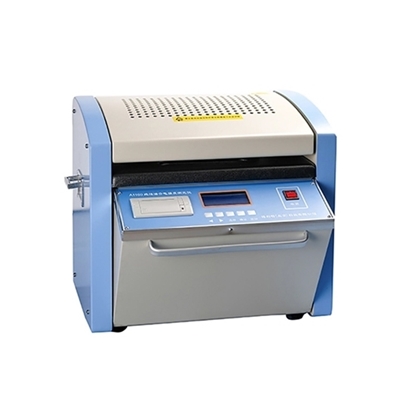How to Maintain Dielectric Oil Tester?
The insulating oil dielectric strength tester is an instrument used to measure the dielectric strength of insulating oil. It is mainly used for on-site testing of insulating oil in power systems to ensure the insulation performance and safe operation of power equipment, such as dielectric strength testing of insulating oil in high-voltage electrical equipment such as transformers and circuit breakers.

The instrument can apply voltage to the insulating oil under specified conditions until the oil sample breaks down, so as to determine whether the quality of the insulating oil meets the standard. Therefore, it is an important insulating medium in the power system, used for insulation and cooling, and its dielectric strength is crucial to the safe operation of the power system.
Common Faults
In actual use, various faults may be encountered, and the handling methods of these faults are crucial to ensure the normal operation of the tester. Below ATO Industrial Automation will discuss in detail the common faults of the insulating oil dielectric strength tester and their handling methods:
- Unstable Output Voltage: This may be caused by power supply voltage fluctuations, aging, or damage to internal components of the instrument. Check whether the power supply is stable and perform necessary maintenance and cleaning on the instrument.
- The Test Result has Large Errors: This may be due to electrode contamination, poor electrode contact, improper handling of the insulating oil sample, or inaccurate calibration of the instrument itself. Check whether the electrodes are clean, ensure good electrode contact, and calibrate the instrument according to the instructions. Check whether the insulating oil sample meets the requirements and ensure that the sample is properly handled.
- Display or Control System Failure: This may be caused by damage to the display, control system software failure, or hardware failure. You can try to restart the instrument. If the problem persists, you may need to contact professional technicians for repair or replacement of related parts.
- Slow Test Speed: This may be caused by wear or failure of the internal mechanical parts of the instrument. You can try to upgrade the software or replace the internal mechanical parts.
Unable to start or automatically shut down: This may be caused by power problems, internal circuit failures, or software failures. You can check the power supply and internal circuits, and contact professional technicians for repairs if necessary.
Common troubleshooting methods for insulating oil dielectric strength testers involve checking power supplies, fuses, and oil cup covers, setting limits, and removing foreign objects. Correct maintenance and operation methods are the key to ensuring the normal operation of the instrument. When encountering a fault, targeted inspections and treatments should be carried out according to the specific situation, and professional help should be sought if necessary. Through such measures, the use efficiency and service life of the insulating oil dielectric strength tester can be effectively improved.
Daily Maintenance
The instrument should be stored in a dry, ventilated, dust-free, moisture-proof environment, avoiding direct sunlight and high-temperature environments to prevent overheating and damage to electronic components. Wipe the surface of the instrument with a clean silk cloth, especially the electrode and oil cup parts, to keep it clean. Or use a soft silk cloth or suede to avoid scratching the surface of the instrument.
Check the electrode gap every month to see if there is any change. Use a magnifying glass to observe whether the electrode surface is dark. If so, wipe the electrode surface with a silk cloth and readjust the electrode gap. Replace the printer ribbon and roll paper regularly and replace them according to the correct steps to avoid print quality problems.
During the period of inactivity, dry and qualified insulating oil should be injected into the oil cup to protect the oil cup from moisture.
Regular maintenance
Perform a comprehensive inspection and maintenance at least once a year, including inspection of circuits, sensors, and mechanical structures. In addition, it is also important to check and lubricate moving parts, such as stirrers and lifting mechanisms, to ensure smooth operation. It should also be noted that if there is software support, check the software version regularly and update it when necessary to ensure the accuracy of the test data and the compatibility of the equipment.
Troubleshooting
Record the time, content, and measures taken for each maintenance in order to track the maintenance history of the equipment. Repairs, care and adjustments should be performed by professionals to avoid greater damage caused by incorrect operations by non-professionals.

